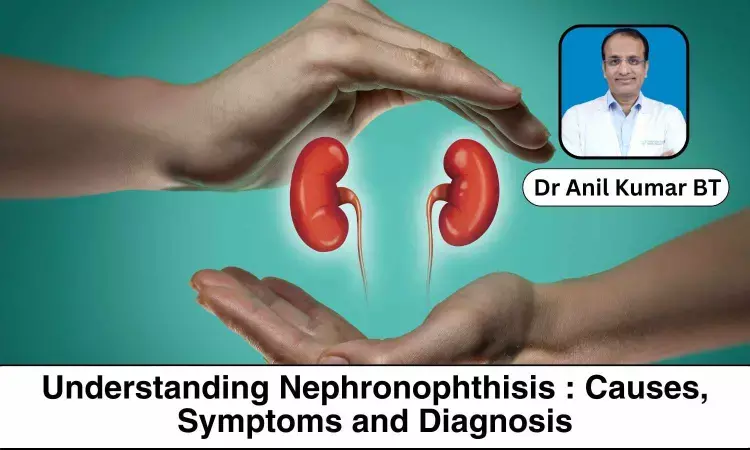- Home
- Medical news & Guidelines
- Anesthesiology
- Cardiology and CTVS
- Critical Care
- Dentistry
- Dermatology
- Diabetes and Endocrinology
- ENT
- Gastroenterology
- Medicine
- Nephrology
- Neurology
- Obstretics-Gynaecology
- Oncology
- Ophthalmology
- Orthopaedics
- Pediatrics-Neonatology
- Psychiatry
- Pulmonology
- Radiology
- Surgery
- Urology
- Laboratory Medicine
- Diet
- Nursing
- Paramedical
- Physiotherapy
- Health news
- Fact Check
- Bone Health Fact Check
- Brain Health Fact Check
- Cancer Related Fact Check
- Child Care Fact Check
- Dental and oral health fact check
- Diabetes and metabolic health fact check
- Diet and Nutrition Fact Check
- Eye and ENT Care Fact Check
- Fitness fact check
- Gut health fact check
- Heart health fact check
- Kidney health fact check
- Medical education fact check
- Men's health fact check
- Respiratory fact check
- Skin and hair care fact check
- Vaccine and Immunization fact check
- Women's health fact check
- AYUSH
- State News
- Andaman and Nicobar Islands
- Andhra Pradesh
- Arunachal Pradesh
- Assam
- Bihar
- Chandigarh
- Chattisgarh
- Dadra and Nagar Haveli
- Daman and Diu
- Delhi
- Goa
- Gujarat
- Haryana
- Himachal Pradesh
- Jammu & Kashmir
- Jharkhand
- Karnataka
- Kerala
- Ladakh
- Lakshadweep
- Madhya Pradesh
- Maharashtra
- Manipur
- Meghalaya
- Mizoram
- Nagaland
- Odisha
- Puducherry
- Punjab
- Rajasthan
- Sikkim
- Tamil Nadu
- Telangana
- Tripura
- Uttar Pradesh
- Uttrakhand
- West Bengal
- Medical Education
- Industry
Understanding Nephronophthisis : Causes, Symptoms and Diagnosis - Dr Anil Kumar BT

Nephronophthisis (NPHP) is an genetic cystic kidney disease. It is the most common monogenic cause of Chronic Kidney Disease in children or adolescents.
History
It was first described in in 1945 by Smith and Graham, they termed it Medullary cystic kidney disease and 6 years later in 1951 Fanconi et al described this disease as “familial juvenile nephronophthisis”.
The term “Nephronophthisis” is derived from a Greek word meaning “degeneration of the kidney” because there is decreasing function and size of the kidneys during disease course.
Nephronophthisis is found in populations worldwide. It occurs in an estimated 1 in 50,000 new-borns in Canada, 1 in 100,000 in Finland, and 1 in 922,000 in the United States. Its incidence in other populations is unknown. It is termed as a rare disease. However it is one of the most important causes of chronic kidney failure in childhood
Inheritance
This condition is inherited as autosomal recessive, which means both copies of the gene in each cell have mutations. The parents of an individual with an autosomal recessive condition each carry one copy of the mutated gene, but they typically do not show signs and symptoms of the condition.
At least 13 different genes NPHP 1-13 are identified. Among the known genes causing NPHP, a large deletion of NPHP1 is the most common, accounting for approximately one fifth of NPHP cases
Clinical Features
The patients affected typically present with symptoms of passing large volume of urine (polyurea), excessive fluid intake(polydipsia), and after several months to years they reach “end stage kidney disease” a condition necessitating either dialysis or kidney transplantation in order to survive.
About 85 percent of all cases of nephronophthisis are isolated, which means they occur without other signs and symptoms. Some people with nephronophthisis have additional features, so-called "extra-renal symptoms" which can include eye problems (Retinitis pigmentosa) causing blindness, Cardiac defects, liver problems, skeletal problems, polydactyly(multiple fingers), obesity and neurological defects
Nephronophthisis can occur as part of separate syndromes that affect other areas of the body; these are often referred to as nephronophthisis-associated ciliopathies.
like Bardet Biedel syndrome, Cogan syndrome, Senior-Lekon syndrome and Joubert syndrome.
Different Variants
There are three variants of the disease depending the time these patients reach end stage renal disease (ESRD)
1. Juvenile Nephronophthisis: ESRD around the thirteenth year of age.
2. Infantile Nephronophthisis: ESRD before the fourth year of age
3. Adolescent Nephronophthisis: ESRD around the nineteenth year of age
In juvenile NPHP, renal failure develops within the first three decades of life.In contrast, infantile NPHP, which is characterized by mutations in NPHP2/inversin, leads to renal failure between birth and age 3 yr.
Diagnosis
In order to establish a clinical diagnosis of NPHP, a detailed history, clinical examination, including looking for extrarenal associations (abnormal eye movements, retinopathy, ataxia, polydactyly, and cardiac malformations) is required.
We need to see if any other family members are affected with similar problems. Other useful tools for diagnosis are kidney Ultrasound and a kidney biopsy. The biopsy shows features of atrophic tubules, tubular fibrosis and corticomedullary cysts. Furthermore to confirm the diagnosis genetic studies are useful.
Management
There is no specific treatment for these patients. In the early phase of the disease we need to correct the electrolyte imbalances. In the later phase of the disease when they reach end stage renal disease Kidney transplantation is the option. However with a growing understanding of the pathophysiology of NPHP, the future is more hopeful.
In recent years various drugs including vasopressin receptor antagonists , mTOR inhibitors (mammalian target of rapamycin), triptolide and roscovitine (cyclin-dependent kinase inhibitor)have been shown to be effective in reducing renal cysts in animal models of NPHP
There is no risk of recurrence after kidney transplantation however extra-renal symptoms progress irrespective of kidney transplantation.
Disclaimer: The views expressed in this article are of the author and not of Medical Dialogues. The Editorial/Content team of Medical Dialogues has not contributed to the writing/editing/packaging of this article.
Dr Anil Kumar B T (MBBS, MD (General Medicine), DNB (Nephrology)) is a HOD, Sr Consultant Nephrologist & Chief Transplant Physician at Gleneagles BGS Hospital, Kengeri, Bengaluru. With experience of over 10 years, Dr Anil’s expertise is in renal transplantation and has been involved in more than 300 transplantations.


